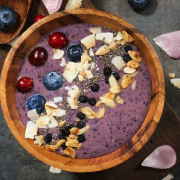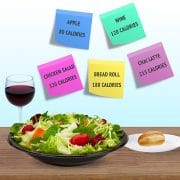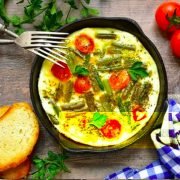How to Manage Weekend Binging…
 You’re good all week, eating healthy food, having alcohol-free days and exercising. Then (thank God) Friday comes along. Time to hit the pub with friends, indulge in pizza for dinner or have a few wines while watching a movie. Saturday morning arrives and you may go to the gym followed by a huge brunch at your favourite cafe and maybe a slice of cheesecake. By Monday morning you’re feeling sluggish, tired guilty and like you’ve gone backwards.
You’re good all week, eating healthy food, having alcohol-free days and exercising. Then (thank God) Friday comes along. Time to hit the pub with friends, indulge in pizza for dinner or have a few wines while watching a movie. Saturday morning arrives and you may go to the gym followed by a huge brunch at your favourite cafe and maybe a slice of cheesecake. By Monday morning you’re feeling sluggish, tired guilty and like you’ve gone backwards.
Sounds familiar?
Most people want to let loose and unwind on the weekend, especially if they’ve been doing so well during the week. It’s a reward and a way to start relaxing. Let’s face, it’s about having fun in the moment. But the guilt, anger and regret that come at the end of the weekend isn’t helpful. So, what can we do to still enjoy the weekends without feeling like we’ve taken 5 steps back?
Most of us are unconsciously dictated by what day it is and this could be the answer to the weekend bingeing. If you are striving for perfection on Monday, Tuesday and Wednesday then you are relying a lot on willpower. Willpower is like fuel in a car, it can run out the more you drive the car. Then you relax a bit on Thursday (afterall, Friday is looming) then let loose Friday, Saturday, Sunday because you have no willpower left so it’s all systems go!
What if you didn’t strive to be perfect during the week? This is the thinking behind our 80/20 days. You don’t have to be perfect. Eat real, healthy food 80% of the time, but if you do fancy a glass of wine with dinner or a bowl of ice-cream after dinner, then count that as your 20%. The only rule is you don’t go beyond that 20% and have the wine and the ice-cream. Trade one thing off for another. Choose your daily treat wisely, have the best quality you can afford and really enjoy it.
If you take being ‘perfect’ out of the equation, it relieves the pressure and the need for willpower. Our approach allows you to set your own food rules based on the 80/20 approach, so food choices aren’t difficult and best of all, there aren’t any ‘cheat days’ because you are giving yourself permission to indulge in that 20% if you want it.
This approach also allows you to be in charge of your own choices, providing they are within the 80/20 range.
If your weekend indulges are working for you, of course keep going. You know yourself what works for you. But if you find you’re feeling conflicted and don’t enjoy the feeling at the end of the weekend, you can experiment with the 80/20 approach during the week and see how that affects your weekend.



 Hugh Van Cuylenburg from
Hugh Van Cuylenburg from 









 There are fixed, heritable genes (such as skin and eye colour) and there are genes that can be influenced daily according to our lifestyle. These genes are continually directing the production of proteins that control how your body functions at every second of the day. Genes turn on or off (sometimes at a rapid rate) only in response to signals they receive from the surrounding environment – signals that you provide based on the food you eat, the exercise you do (or don’t do!), your quality of sleep, sun exposure and so on. Genes are like light switches that turn on and off and influence every element of body function. So, you are in the driver’s seat to take control of your genes expression. Here are some tips for you:
There are fixed, heritable genes (such as skin and eye colour) and there are genes that can be influenced daily according to our lifestyle. These genes are continually directing the production of proteins that control how your body functions at every second of the day. Genes turn on or off (sometimes at a rapid rate) only in response to signals they receive from the surrounding environment – signals that you provide based on the food you eat, the exercise you do (or don’t do!), your quality of sleep, sun exposure and so on. Genes are like light switches that turn on and off and influence every element of body function. So, you are in the driver’s seat to take control of your genes expression. Here are some tips for you:
 Basil evokes aroma’s of fresh Italian dishes and can be eaten cooked or raw. Not only is it delicious, it’s also incredibly healthy. Read about the health benefits of basil here and enjoy this simple pesto recipe.
Basil evokes aroma’s of fresh Italian dishes and can be eaten cooked or raw. Not only is it delicious, it’s also incredibly healthy. Read about the health benefits of basil here and enjoy this simple pesto recipe.
 Including loads of vegetables in your diet is so important for your health. Vegetables are incredibly rich in nutrients and antioxidants, which boost your health and help fight off disease. Additionally, they are good for weight control as they have a low-calorie content. Getting the required several serves of vegetables can be hard for some people.Some simply don’t like them while others are unsure how to prepare them so they taste good.Here are some unique ways you can incorporate vegetables into your diet so that you never get sick of eating them.
Including loads of vegetables in your diet is so important for your health. Vegetables are incredibly rich in nutrients and antioxidants, which boost your health and help fight off disease. Additionally, they are good for weight control as they have a low-calorie content. Getting the required several serves of vegetables can be hard for some people.Some simply don’t like them while others are unsure how to prepare them so they taste good.Here are some unique ways you can incorporate vegetables into your diet so that you never get sick of eating them.

 The benefits of olive oil
The benefits of olive oil